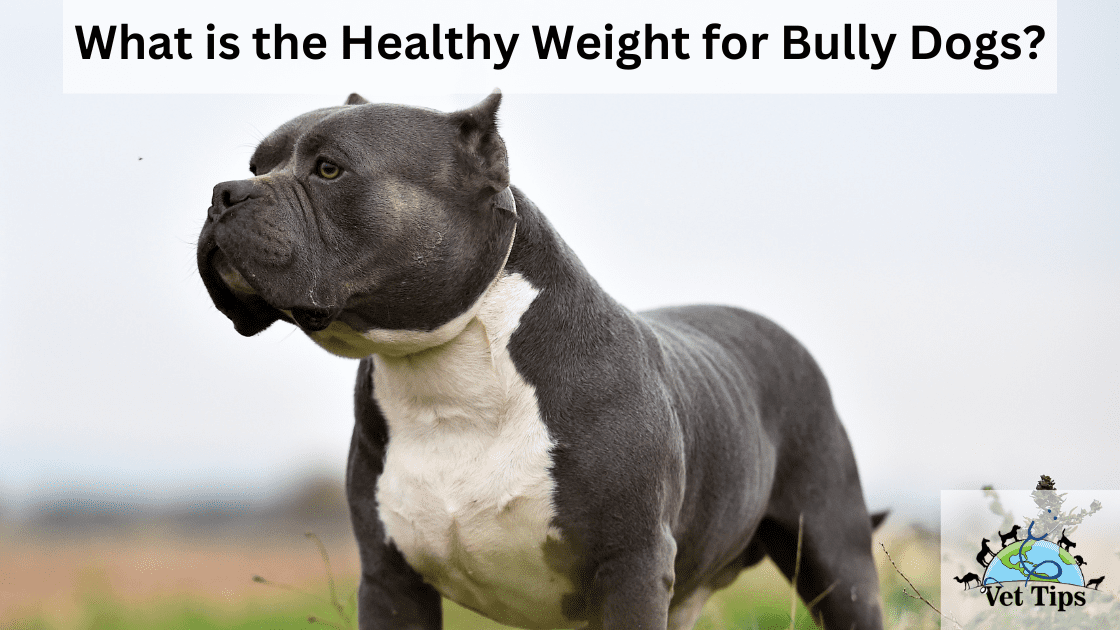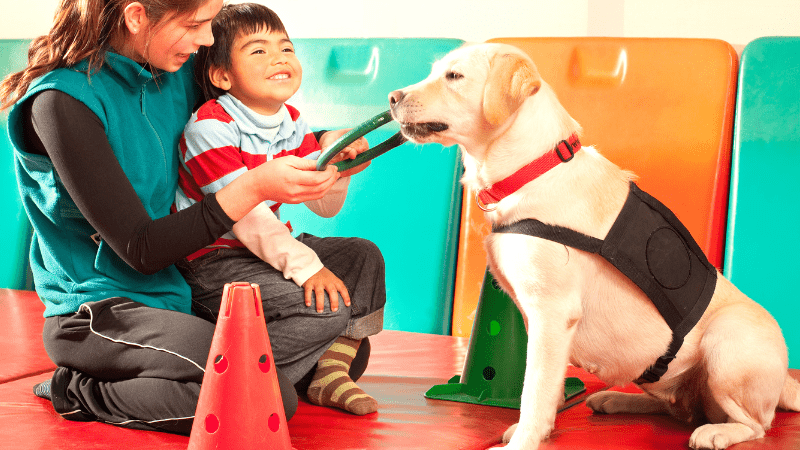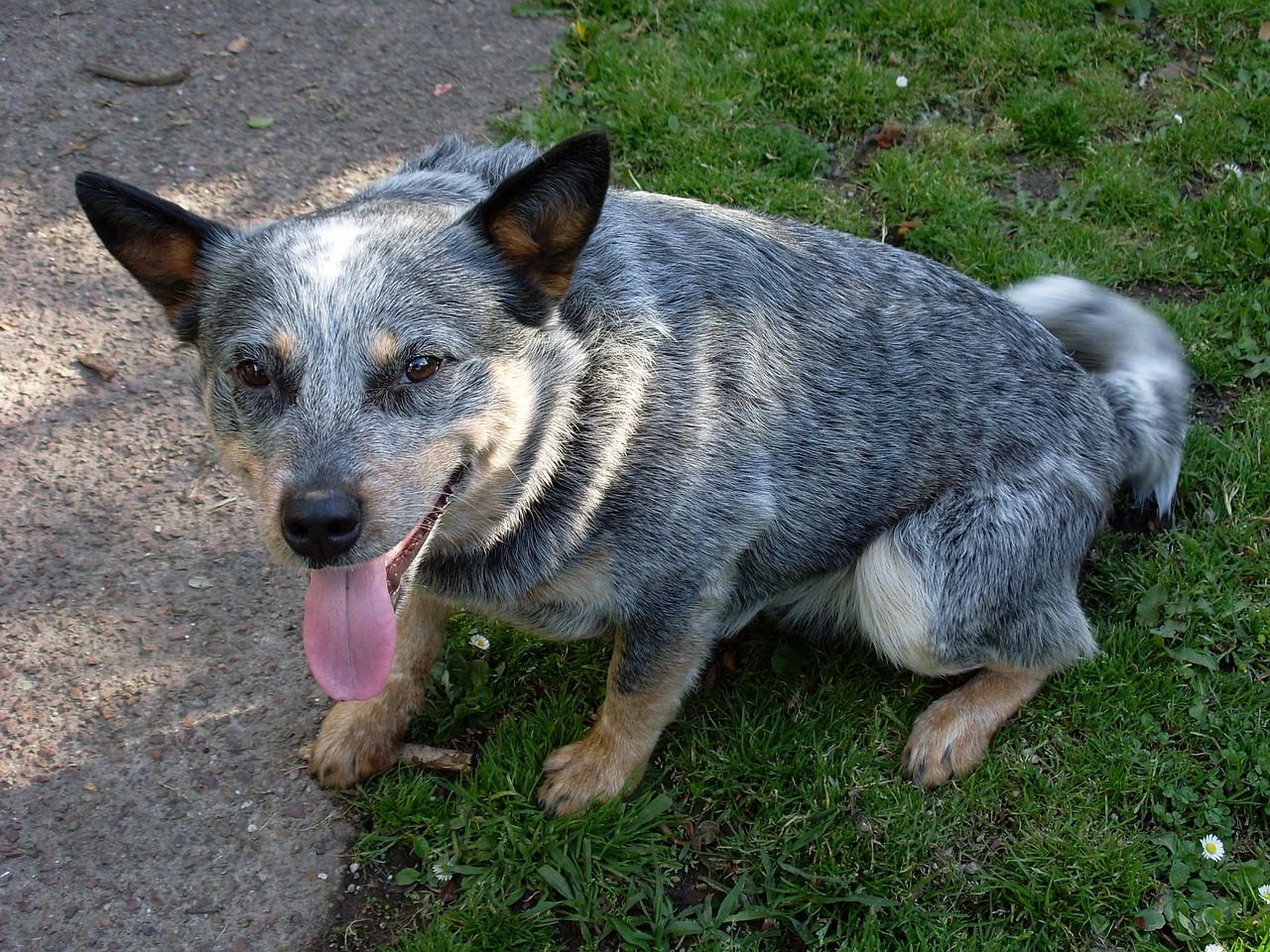Maintaining a healthy weight is crucial for the overall well-being and longevity of any dog, including Bully breeds. As responsible pet owners, it’s important to understand what constitutes a healthy weight for our furry friends. In this article, we will delve into the topic: “What is the Healthy Weight for Bully Dogs?” providing insights into factors to consider, potential health implications, and guidelines for maintaining their optimal weight.
Let begin…
Bully, Bully Pit Bull American Bully Pit, despite his intimidating figure, largely thanks to his massive mass of muscles, American Bully is quite a funny and surprisingly affectionate dog. While they are often confused with both the American Pit Bull Terrier and the American Bulldog, the American Bully is a distinct breed. However, they are closely related to the other two species. They are brilliant, eager to please, good with children, distrustful of strangers, and some of the most adorable family dogs when properly trained and socialized. This breed is very quickly becoming one of the USA’s most popular breed for all that and more.
What is the Healthy Weight for Bully Dogs?
There is no set law about the weight of a particular bully breed. Going for the “breed standard weight” alone can be completely inaccurate. Within each species, some dogs are naturally smaller and naturally more significant than the breed standard.
It is best to evaluate your dog professionally and then determine if your dog needs to gain weight, lose weight, or be currently at his ideal weight.
Using the weight chart, you can control your dog’s body condition score (BCS) depending on where you may need to increase/decrease your calorie intake.
Ideal weight and height of bully breeds
For males:
- Height: 16-23 inches
- Weight: 66-120 lbs
For females:
- Height: 14-20 inches
- Weight: 66-120 lbs
Factors Influencing Ideal Weight
Several factors come into play when determining the ideal weight for Bully dogs. These factors include the dog’s breed, age, gender, activity level, and individual body structure. Each Bully breed may have specific breed standards or guidelines that can serve as a reference point for determining the ideal weight range. Consulting breed-specific resources and reputable breeders can provide valuable insights into breed-specific weight considerations.
Health Implications of Weight Imbalance
Both overweight and underweight conditions can have adverse effects on the health and well-being of Bully dogs. Carrying excess weight can put strain on their joints, leading to mobility issues and an increased risk of orthopedic problems. Obesity may also contribute to respiratory difficulties, heart conditions, and reduced overall stamina. Conversely, being underweight can indicate malnourishment or underlying health issues, potentially compromising their immune system and overall vitality.
Guidelines for Maintaining a Healthy Weight
To ensure your Bully dog maintains a healthy weight, consider the following guidelines:
- Consult with a Veterinarian: A veterinarian can provide personalized guidance based on your dog’s specific needs, taking into account factors such as age, breed, and overall health.
- Balanced Diet: Feed your Bully dog a well-balanced diet that meets their nutritional requirements. High-quality dog food formulated for their breed and age can provide the necessary nutrients while avoiding excessive calorie intake.
- Portion Control: Pay attention to portion sizes and avoid overfeeding. Use feeding guidelines provided by the dog food manufacturer as a starting point, and adjust based on your dog’s individual needs and activity level.
- Regular Exercise: Engage your Bully dog in regular physical activity appropriate for their age and health condition. Exercise helps maintain muscle tone, promotes a healthy metabolism, and contributes to overall well-being.
- Monitoring Body Condition: Regularly assess your Bully dog’s body condition using visual and tactile cues. Look for a well-defined waistline, easily felt ribs with a thin layer of fat, and overall muscle tone.
More about puppy weight gain
On average, small dogs take nine months to reach their adult weight. At the same time, larger dogs can take up to 1.5 years to gain their adult weight. Bully dogs usually mature at ten months.
Common Problems of Obesity in dogs
- Breathing difficulties
- Heart diseases
- Joint and back problems
- Shorter Lifespan [statistics]
Check out this ideal Bully Dog Feed… that keeps your canine away from obesity.
How to determine your dog’s activity level?
You can determine your dog’s activity level by following under given parameters:
- Overweight – You can determine if your dog is overweight using the table shown above. If you have decided that your dog is overweight, we recommend increasing your dog’s activity level and reducing its calorie intake.
- Seniors – Since dogs are classified as seniors at different ages, based on their breed, we recommend visiting the local vet.
- Inactive – Inactive dogs are typically low-energy breeds, older dogs, dogs with arthritis, as well as any dog that spends most of the day resting.
- Typical – Dogs that walk 2-3 times a week (15-20 minute walks) or play an average of an hour a day. He is awake and frequently moves during the day are known as typical
- Active – If your household has multiple dogs or kids/children, your dog will likely be more active. Daily walks (45 minutes to an hour) or play fairly frequently (toss, pickup, run with dogs at dog parks, etc.) are known as active.
- Very Active: Very active dogs take daily walks for more than an hour. They are also active most of the day. They play intensely and play often. If your household has one child, multiple children, or multiple dogs, this can also contribute to a high activity level.
- Working Dog (Light Working): Light working dogs are exercised daily using exercise tools such as the treadmill, flirting stick, or spring stick. Apart from workouts, they also take daily walks (45 minutes to an hour).
- Working Dog (Heavy Duty): Heavy-duty dogs participate in sports that burn a significant amount of calories for several hours a day. Some of these activities comprise are toboggan racing, weight pull, Schutzhund, and dock diving. If your dog has built up a critical amount of stamina and can run on the treadmill or slat mill for several hours a day, he would also enter the heavy-duty working class.
What should you never overfeed a dog?
The answer is straightforward, that is carbohydrates. You should never overfeed your dogs with too many carbohydrates, as they are stored as fat in the body if not used.
Unfortunately, carbohydrates are a much cheaper ingredient compared to other nutrients like protein. Therefore, major dog food manufacturers often use it to offset dog food’s weight while keeping dog food prices low.
It is the main reason why pets across the United States are becoming obese. Ironically, this became the driving force behind the rise of these healthy pet food startups as their founders seek to provide their own suitable and much healthier alternatives.
Another way to make your dog feel full and not risk overeating is to consume high fiber dog food.
The high-fiber dog food will make your dog’s stomach full faster, and therefore he eats less. And since the fiber is not stored in the body like carbohydrates are, it can be a good measure to keep your dog’s weight in check.
Conclusion: What is the Healthy Weight for Bully Dogs?
Every specific dog and each bully dog breed have their own optimal weight. But pet parents must give a good quality protein-based diet to keep the bully’s health and weight in check. Routine vet visits are recommended for better growth, nourishment, and welfare of your dogs.
Tell us in the comments, how you like our article “What is the Healthy Weight for Bully Dogs?”
For similar posts like this, click here.
For the source file, click here.








One thought on “What is the Healthy Weight for Bully Dogs? (The Complete Guide)”